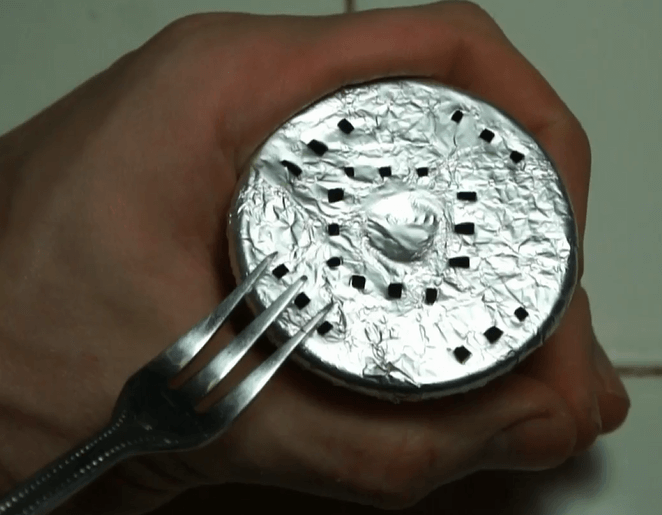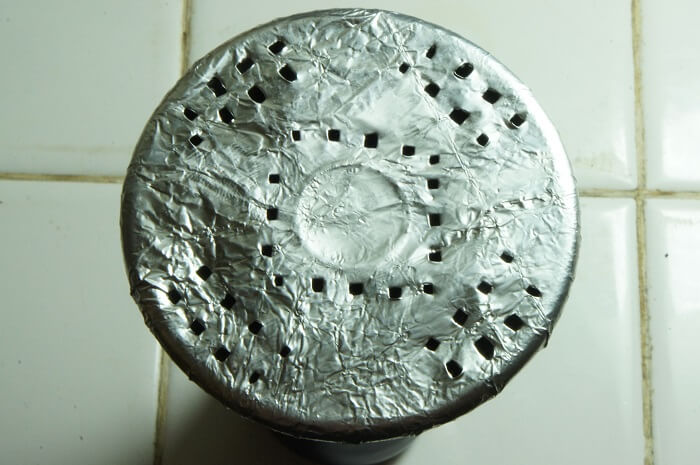Hole pattern obsession is a real and painstaking affliction. You can recognize a sufferer thanks to their compulsive counting and recounting of holes, a strange fixation on geometric patterns and habitual collecting of “pokers” in a search for the perfect size. What can we do to help those who have to live every day of their lives trying in vain to mystify their method for poking holes in aluminum foil?
Show them how simple it should be. Show them this method.
I’ve been doing this long enough and I’ve tried enough different patterns that I can tell you with great confidence that it doesn’t make that big of a difference. That’s why I’ve settled on only a few patterns that I think work well, are simple and can be done quickly without a lot of work or any specialized tools. This is the basic hole pattern that I use on most funnel bowls.

Looks pretty simple, huh? That’s because it is. All you have to do is make a ring of holes around the spire and four groups of holes around the edge of the bowl. I use an oyster fork with the points sharpened simply because I also use that to pack my bowls and it’s already on hand. You can use anything that will easily pierce the foil.
If you watched the video associated with this post you’ll likely notice that I make a square of holes around the spire. Can you guess why? It’s because it’s hard to make a circle out of straight lines. There is no secret method and the square doesn’t help swirl the hot air into a perfect vortex or any of the other claims that have been made about specific hole patterns. It’s just the easiest shape to poke with a fork. If you’re using a tack, nail or some other single point to poke your holes then feel free to make a circle. It won’t change a thing.
The placement of the holes makes for good airflow and good heat transfer. That’s the point of holes int the foil, right? Mission accomplished.
The only thing that makes this hole pattern a little different than many others is the inclusion of intentional blank spots. These give you the option to have more direct heat reach the tobacco by placing the coals directly over the holes or have a slightly cooler smoke by placing them on the solid foil. It’s a very small difference but it adds just a little bit more potential for fine tuning your heat management.

Remember that there is no universal hole pattern that works for every bowl in the world. The size and shape of the bowl will change the number of holes you need to deliver good airflow and good heat to the tobacco. On something like the Tangiers Funnel you will need a few more rows of holes to get things heated up when smoking the average modern tobacco. As with every method I suggest, it won’t be perfect for every situation and every smoker. Some people swear by the method suggested by Eric, the creator of Tangiers. He basically pokes so many holes that the foil barely exists anymore. That works for him and I’ve had it work great for me. But, it’s definitely not a versatile hole pattern and works best with Tangiers.
The reason I suggest the method upon which this article is found is because it’s so versatile. Every tobacco I’ve smoked with this method performs nicely and I find heat management to be a breeze. It’s fast, I don’t have to think about the pattern or worry about messing it up, and it’s effective. What more could you want?
